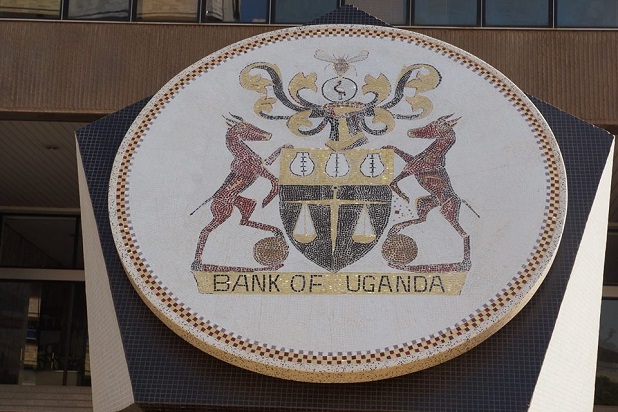The Uganda National Meteorological Authority (UNMA) has explained the cause of the current rains and warned that they will continue through January in some parts of the country.
In a statement dated 10th December 2019 signed by Deus Bamanya on behalf of UNMA Executive Director, the weatherman says that the most significant phenomenon that have influenced the performance of seasonal rainfall since September 2019 is called the positive Indian Ocean Dipole (IOD).
Indian Ocean Dipole refers to the difference in sea-surface temperatures in opposite parts of the Indian Ocean.
Positive Indian Ocean Dipole occurs when western Indian Ocean becomes warmer and eastern part of Indian Ocean becomes colder, and then becomes negative IOD phase when the revise is true.
“When a positive IOD occurs, it aids higher evaporation and also creates a low pressure zone in western part of the ocean and hence allowing in reversal winds from the colder parts of Indian Ocean to transport moist air inwards over the continent near the equator, strengthening the ITCZ and leading to larger and more widespread storm clouds that result into wetter conditions across many East African Countries,” UNMA explains.
It adds: “The dipole’s positive phase for this year has been one of the strongest (+2.1°C) since 2001. It has brought higher-than-average rainfall and floods in eastern Africa and droughts in south-east Asia and Australia. It should however be noted that IOD values have gradually weakened since their peak of +2.1°C in mid-October. It is currently at +0.9°C, which is still well above the positive IOD threshold value of +0.4 °C, Indicating that the current rains are reducing but can be sustained in the southern sector of the country till the end of December 2019.”
UNMA adds that the current rains have not affected Uganda alone, but also other neighbouring countries which include Kenya, Tanzania, South Sudan, Sudan, Ethiopia, Somalia, DR Congo, and Central African Republic.
Rainfall outlook for December 2019 and January 2020 over Uganda
Based on the current conditions of IOD as well as details of the Uganda’s climatology, scientific tools for climate analysis and the physical features of the different regions of the country, Uganda National Meteorological Authority has come up with December 2019 and January 2020 forecast as follows:-
Overall, there is an increased likelihood of near normal to above normal rainfall over most parts of southern sector of the country, while the rest of the country is expected to continue receiving on and off rainfall during the month of December 2019.
South and Central Western Uganda
South Western (Kabale, Kisoro, Rukungiri, Kanungu, Ntungamo, Mbarara, Kiruhura, Isingiro, Ibanda, Bushenyi, Buhweju, Mitooma, Sheema, Rubirizi, Rukiga and Kasese) districts and Central Western (Bundibugyo, Ntoroko, Kabarole, Kyenjojo, Kyegegwa, Kamwenge, Masindi, Buliisa, Hoima, Kikuube, Kakumiro, Bunyagabu and Kibaale) districts
These areas have been experiencing outbreaks of showers and thunderstorms over several places since September 2019. These rains are expected to reduce but continue until the end December 2019, and spill over to some few places during the month of January 2020. Overall, near normal to above normal rainfall is expected over several parts of this sector of the country during the month of December 2019.
South Eastern and Eastern Central Uganda
South Eastern (Kamuli, Iganga, Bugweri, Luuka, Namutumba, Buyende, Kaliro, and Butaleja) districts, and Eastern Central: (Pallisa, Butebo, Budaka, Kibuku, Mbale, Sironko, Manafwa, Bududa, Bulambuli, Kapchorwa, Kween, Bukwo, Bukedea, Kumi, Kaberamaido and Soroti) districts.
This region has been experiencing above normal rainfall since September 2019. The peak of rains was achieved around mid-October. The rains are expected to continue till the end of December 2019. There is high likelihood that Intermittent rains are expected to continue over hilly areas of this region during the first weeks of January 2020. Overall, above normal (above average) rainfall is expected over this area during the month of December 2019.
North Eastern Uganda
(Amuria, Kapelebyong, Katakwi, Moroto, Kotido, Nakapiripirit, Nabilatuk, Abim, Napak, Amudat, and Kaabong) districts
This region has been experiencing above normal rainfall since September 2019. However, these rains are currently reducing into intermittent light rains. The current situation is expected to continue until mid to late December 2019. Over all, there are high chances that this region is expected to receive near normal rains during the month of December 2019 and below normal rainfall during January 2020.
Northern Uganda
North Western (Zombo, Nebbi, Pakwach Okolo, Arua, Koboko Terego, Maracha, Moyo, Yumbe, Adjumani) districts; Eastern Northern Part (Lira, Kitgum, Agago, Otuke, Pader, Kole, Dokolo and Kaberamaido) districts; and Central Northern Parts (Gulu, Apac, Kwania, Pader, Lamwo Nwoya, Amuru, Oyam and Kiryandongo) districts
This region has been experiencing above normal rainfall since September 2019. But currently the rains have reduced and the region is experiencing occasional showers and thunderstorms. Overall, above normal (above average) rainfall is expected over this region. Overall, there are high chances for near normal rainfall over this region during the month of December 2019 and January 2020.
Lake Victoria basin and central region
This region has been experiencing above normal rainfall since September 2019, which are currently reducing. The occasional outbreaks of showers and thunderstorms are expected to continue over this region till the end of December 2019, with high chances of spilling over to first weeks of January 2020.




